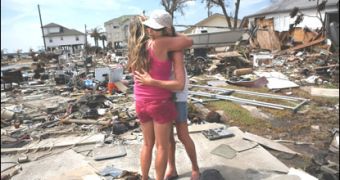Moving from a place after having spent an entire life there and being used to it is possibly among the most difficult things to do, as it changes everything. But when the alternative is losing all, perhaps even your own life, the situation may not look so grim. This problem should be considered by those who live in the areas like those recently affected by hurricane Ike, such as Galveston, Texas.
While its citizens may be relieved by the fact that the hurricane season is over by the end of the month, this does not rule out their concerns for the next year, or the tens of thousands of victims in the past. In the fall of 1900, the first year of the last century, the port city with a population of 38,000 was totally unaware of the disaster that was about to strike. But on September 8th, it all became real in the form of a category 4 hurricane which killed 6,000 to 10,000 due to its 215 km/h winds and massive flooding waves.
Although the authorities immediately ordered the construction of a 5-meter high wall (which, in fact, causes soil erosion) and ground elevation works that would keep the city safe, the inhabitants were just one step away from a catastrophe again this year, courtesy of Ike. The hurricane regressed from a category 4 to a category 2 one right before it hit Galveston, reducing the height of its 6-meter tall surge (by just enough so as not to pass over the wall), while the storm peak barely avoided the city.
The damage was massive, though ($21 billion for the whole Texan coast, with $2.3 billion required by Galveston only for rebuilding purposes). Having these in mind, does insisting on (re)building homes and even large, important institutions (like the Galveston National Laboratory) in such threatened areas sound logic?
Perhaps authorities should not use public money for such versatile goals anymore, instead use it for relocation to safer grounds. If private companies or individuals insist on living there, they would do so at their own risk, with no kind of support from the government. This is not limited to storms, though, as it also includes fire-risk or regions subjected to other hazardous events.

 14 DAY TRIAL //
14 DAY TRIAL //